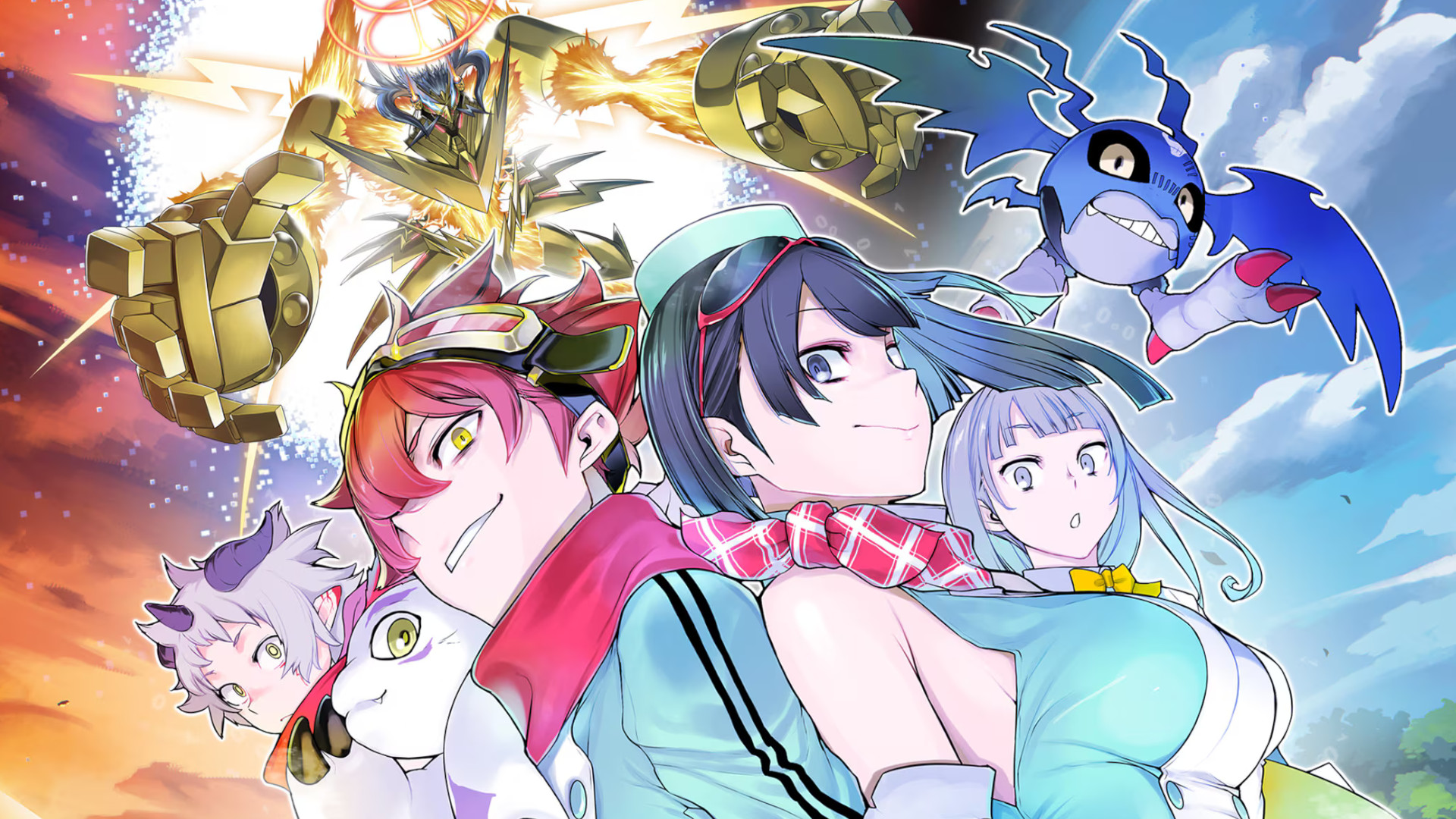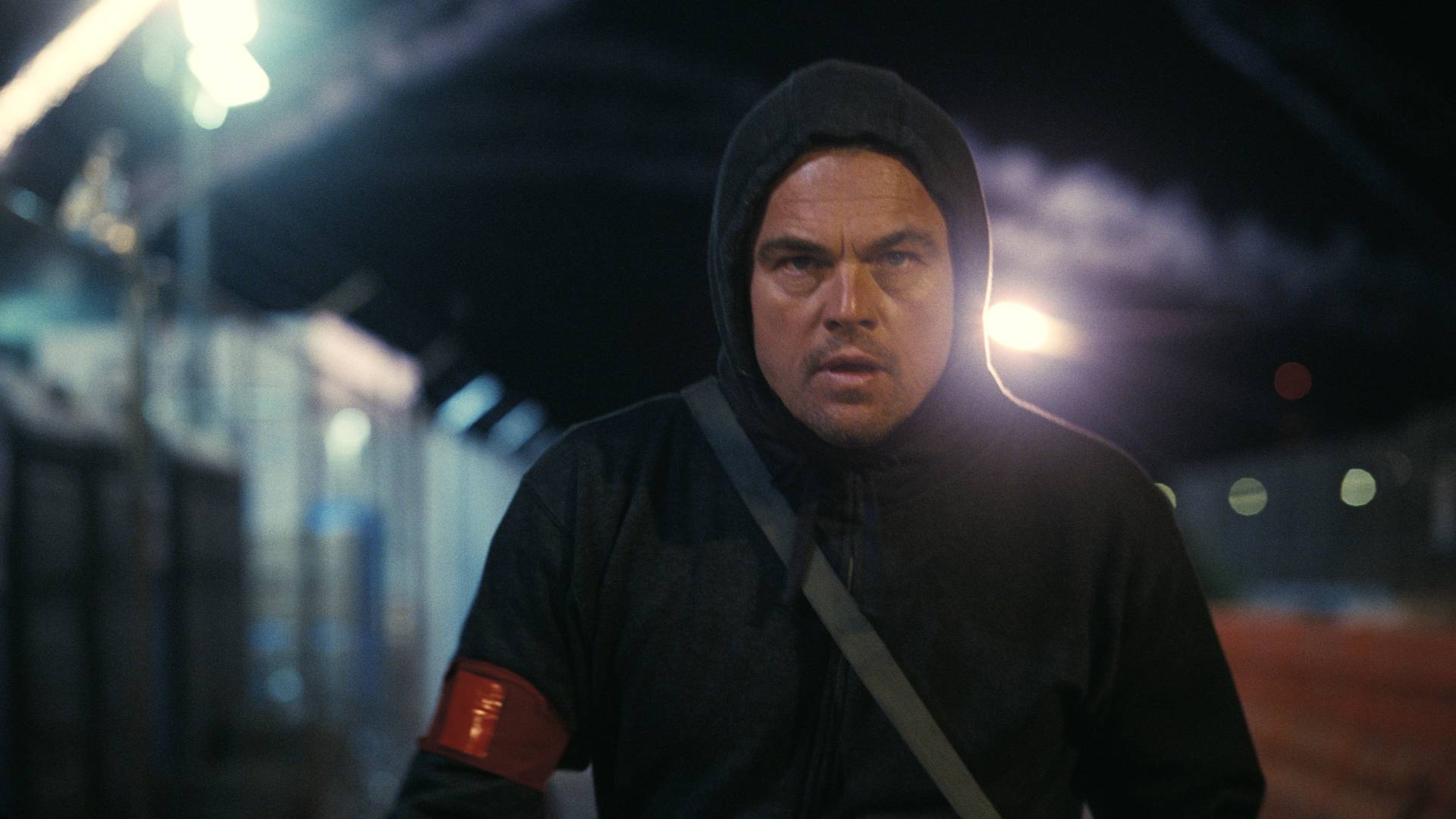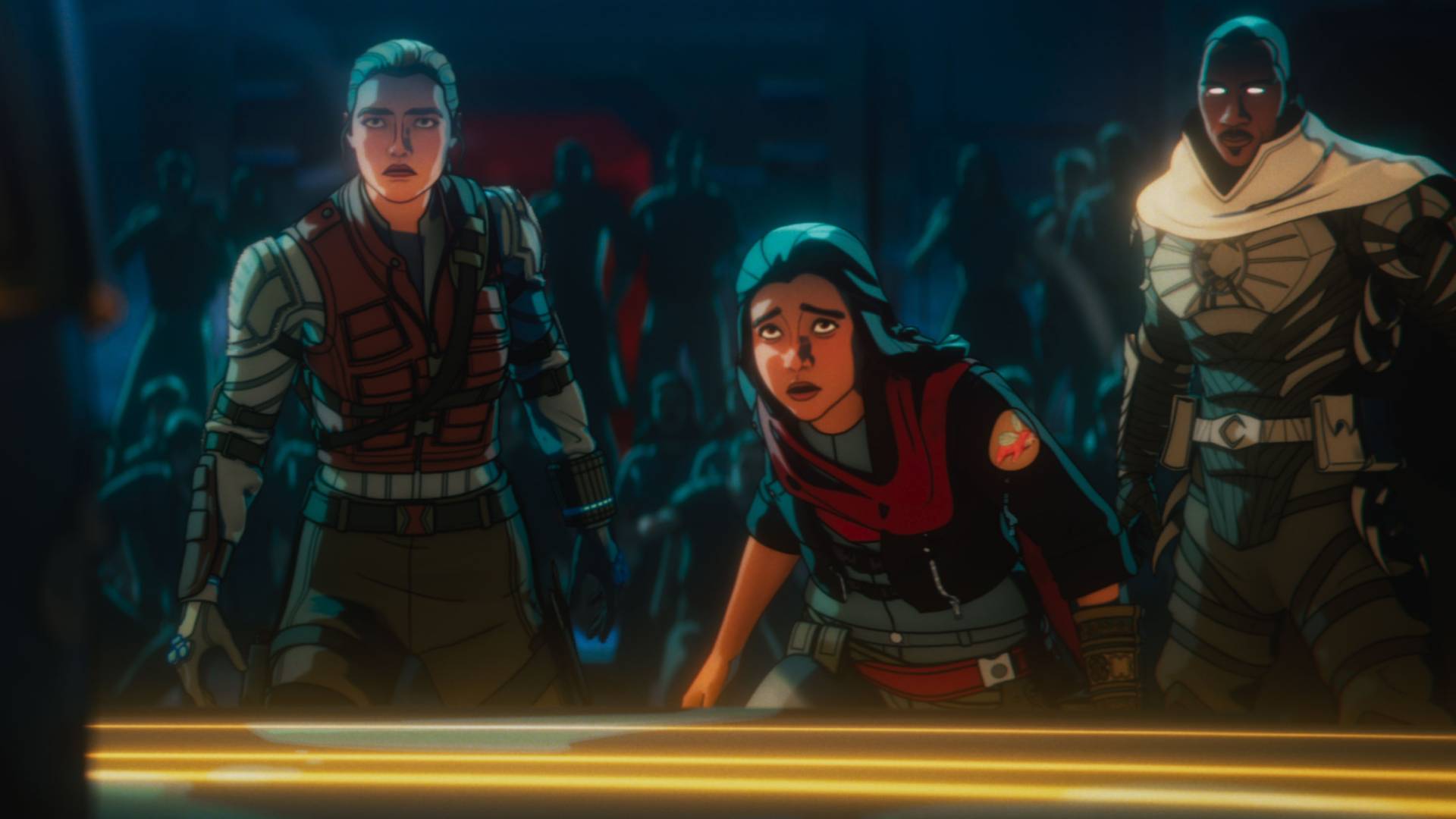How Dying Light 2 is a culmination of everything Techland has learnt making zombie games so far
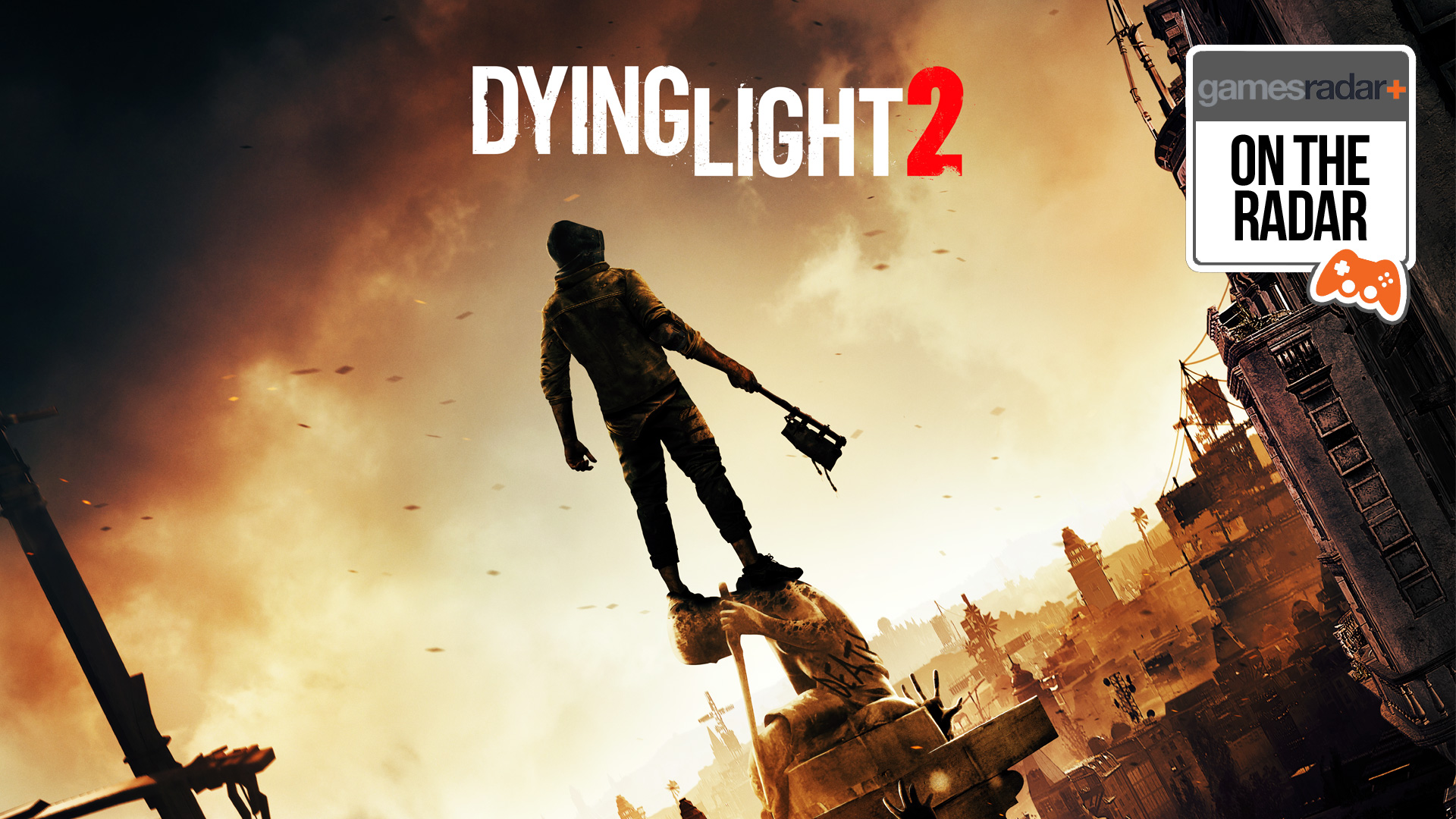
The word “gameplay” comes up an awful lot in the daily conversations taking place across the corridors, offices, and meeting rooms of Techland's HQ in Wroclaw, Poland. That might sound like a blatant observation to make about a game development studio, but it is perhaps the chief explanation for why, four years after launch, half a million people are still playing a single-player, open world zombie game with a decidedly sub-average story. Say what you want about Dying Light’s hokey narrative, but the moment-to-moment euphoria to be found in this open-world FPS is some of the best in the business, a hyper-realised fusion of kinaesthetic parkour and pulpy hack-and-slash action, and you can thank Techland’s fervent obsession with gameplay for that.
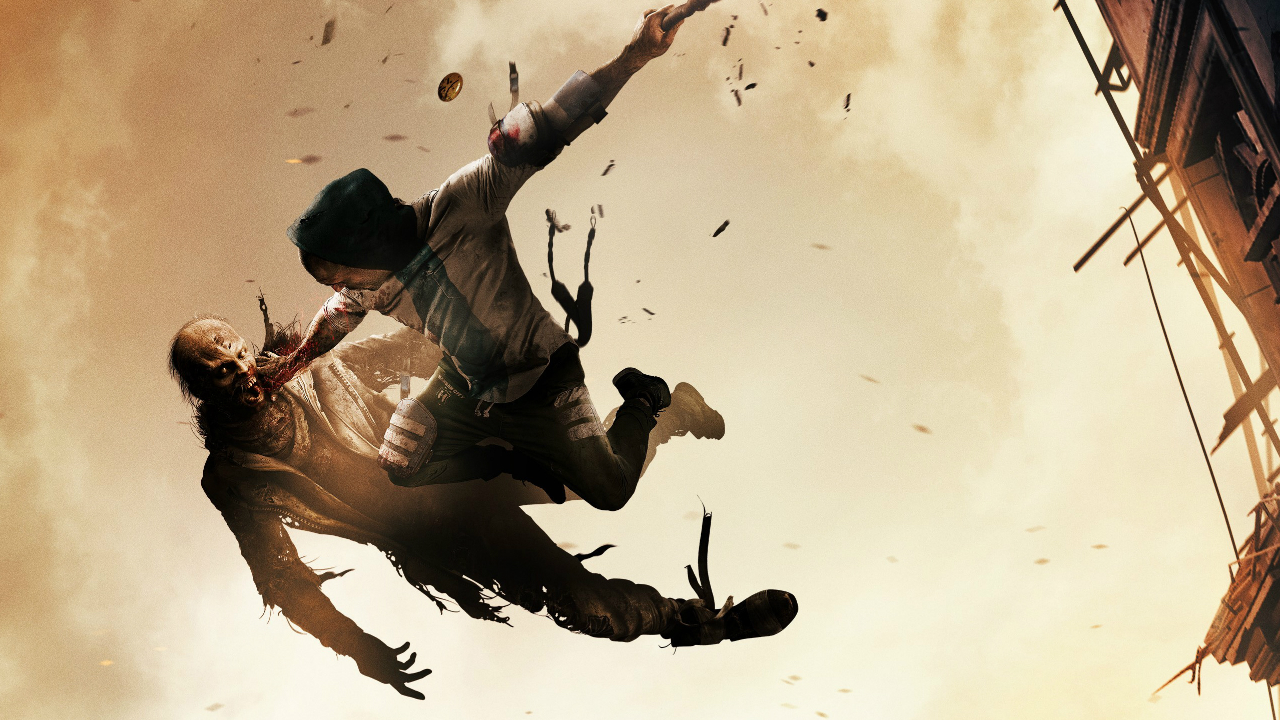
Keep up to date with all of our exclusive Dying Light 2 coverage in our On The Radar: Dying Light 2 hub.
“We spend months, even, just to work on the animations of weapons and the AI’s reactions to being hit by them” explains Tymon Smektała, Lead Game Designer on both Dying Light and its upcoming sequel, Dying Light 2. “As a result, you really feel good when you play it because you are immersed in the world, so you can actually soak in that atmosphere and feel like you are there. Even the small actions that you do are so polished from our side to try and make them as impactful as possible, that you just have this… satisfaction from seeing your action having a reaction on the screen.”
“We are one of those companies where we say the gameplay is the most important thing for us; Techland has always been a gameplay focused studio. We do want to focus on narrative at a high-quality level as well, especially in Dying Light 2," Smektała continues. "But we have a lot of talented gameplay programmers and designers, so all the actions that you do in Dying Light are just satisfying for the player... they release those dopamine shots.”
Origin story
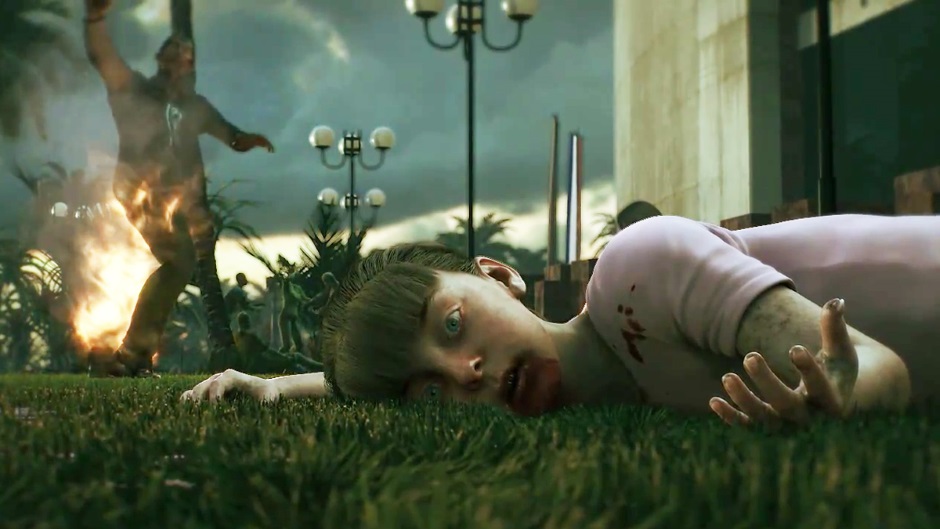
Techland’s first dopamine-inducing zombie whacking simulator, Dead Island, is exactly what got Smektala hired at the company in the first place, having originally reviewed the title (very highly, we might add) as a journalist for a Polish gaming magazine in 2011. He came aboard right around the time the studio began work on Dying Light, and can, therefore, offer a first-hand account of the company’s decision to move to a new zombie IP instead of taking the more obvious route of developing Dead Island 2.
“We realised that Dead Island players, our customers, are growing up and they don’t necessarily want the same things that they liked three or four years ago”, Smektala tells me. “So we wanted to create a game which was more mature, more serious… maybe not too serious, but not as campy as Dead Island was. And, after Dead Island, we started thinking about elements and features we could add to that game, and one thing that kept popping around was the idea that we should give players more versatility and variety when it comes to traversal.”
“We wanted to escape from the fact that Dead Island was basically a hack and slash game where you kept repeating the same action over and over again. So we wanted to create a game which would test different player skills, and which gave our players different options to the situations they came across. And as we started working on the game, we realised the pace and feel changed significantly. It wasn’t Dead Island 2, it was a completely new game. So we looked at Dead Island and we looked at this new game, and we realised that if we named it Dead Island 2 we would do a disservice to the new game because this is a completely new thing.”
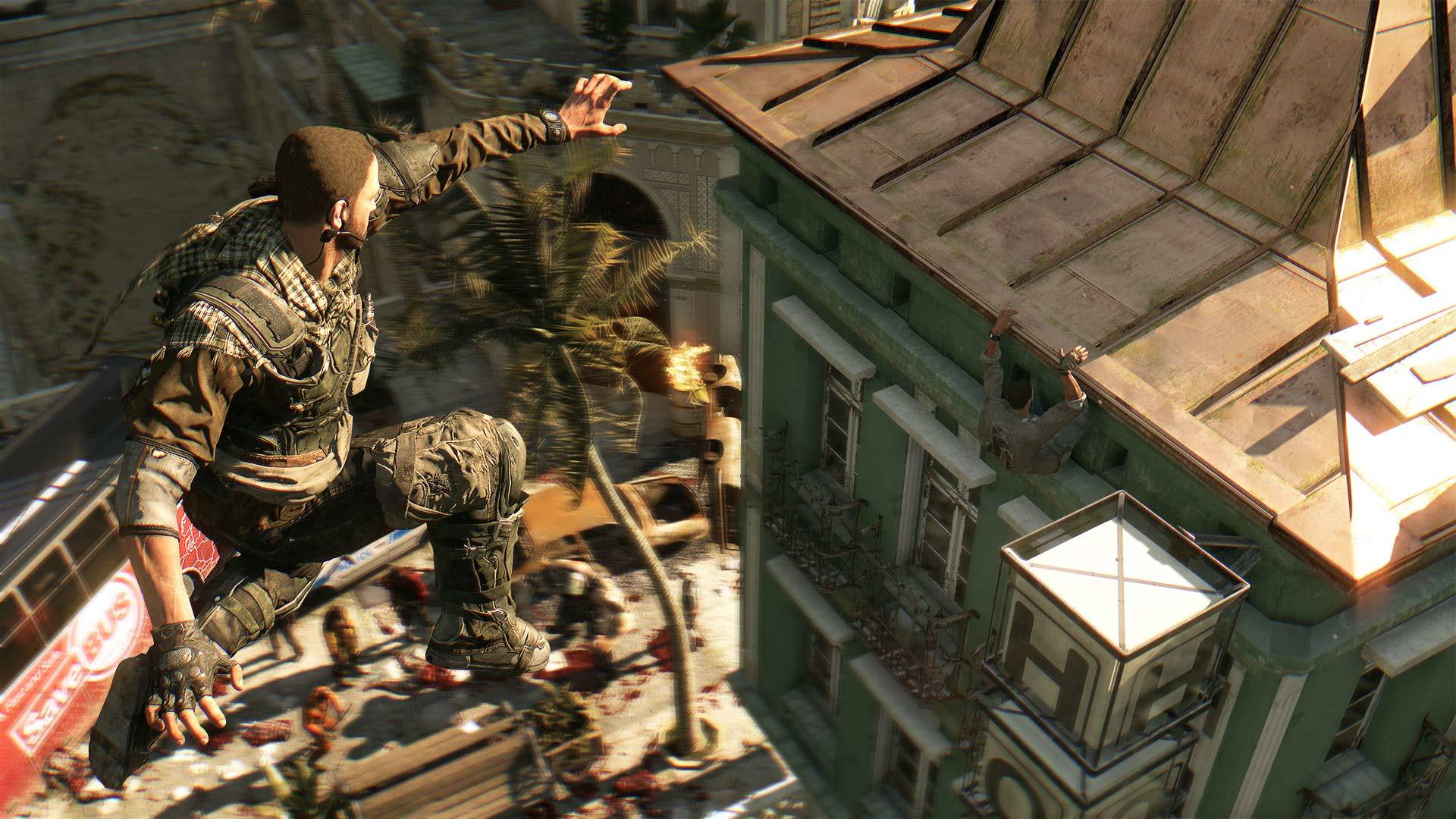
Dying Light was released in 2015, and has accrued over 16 million unique players to date, propped up by an avid community and Techland’s continued curation with free DLC, patches, and the release of a major expansion (The Following) in 2016. Even today, Dying Light is continuing to be supported with in-game events and free item drops, and Techland even released a battle royale inspired multiplayer spinoff - Bad Blood - in early access last year. But Smektala tells me that this commitment to keep the (dying) lights on wasn’t always the plan.
Weekly digests, tales from the communities you love, and more
“The initial schedule for post-launch support was… regular. Maybe a few DLCs to just keep the momentum going for a few months, but right after the release of the game, we realised that we really had something special on our hands. We just answered to what people wanted from us, and I think it was very, very beneficial. Not only from a business perspective, but also from the game design perspective, where we were able to listen to what people wanted and really think about the kind of content that fans would like to see more of from the game.”
Life after death
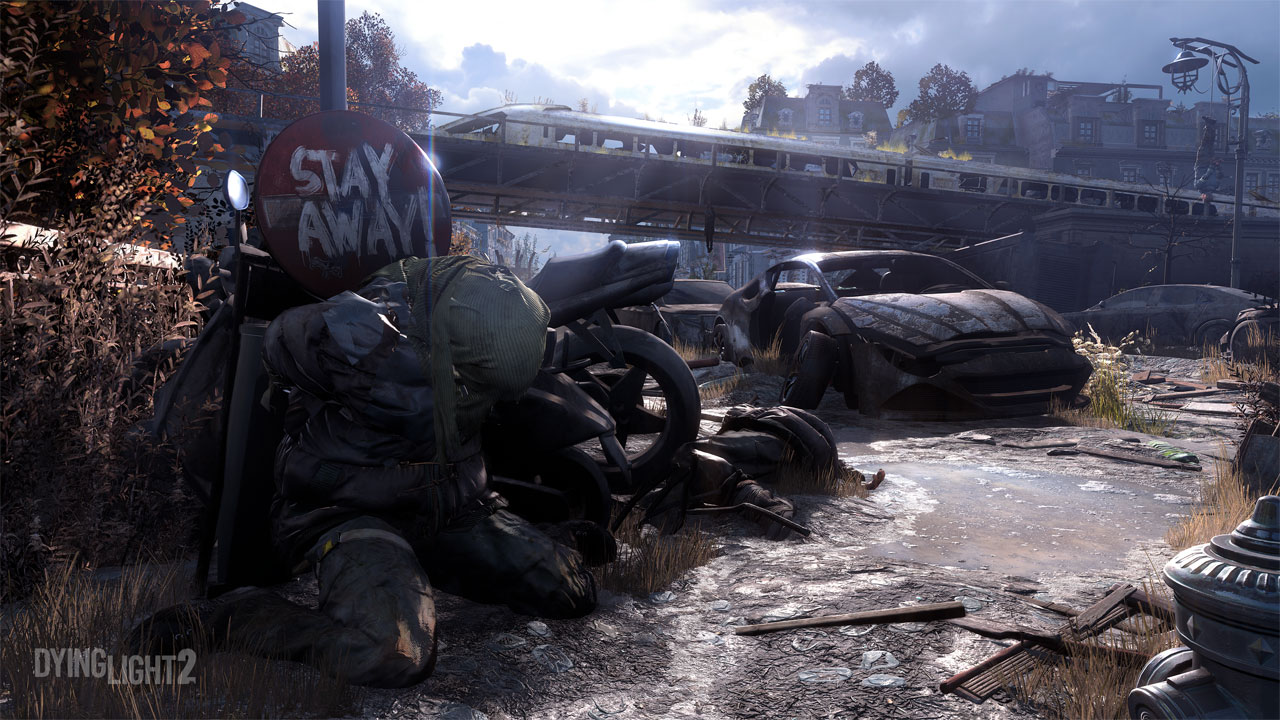
Of course, during this time, Techland was also busy at work developing Dying Light 2, which was announced to the world on stage at Microsoft’s press briefing at E3 2018. During its reveal, famed RPG designer and writer Chris Avellone explained how he was working with Techland to create an ambitious “narrative sandbox” for the sequel’s setting – 15 years after the events of the first – in the “Modern Dark Ages” of Central Europe, in which the choices players make throughout the story will be reflected in the world around them. Strike a deal with a cutthroat gang of bandits, for instance, and you’ll be clued into the profits they make from a local black market. Shake hands with the Peacekeeper faction instead, and you’ll find yourself in a better protected urban jungle with clean water access (used for healing), but that black market won’t be around to upgrade your gear.
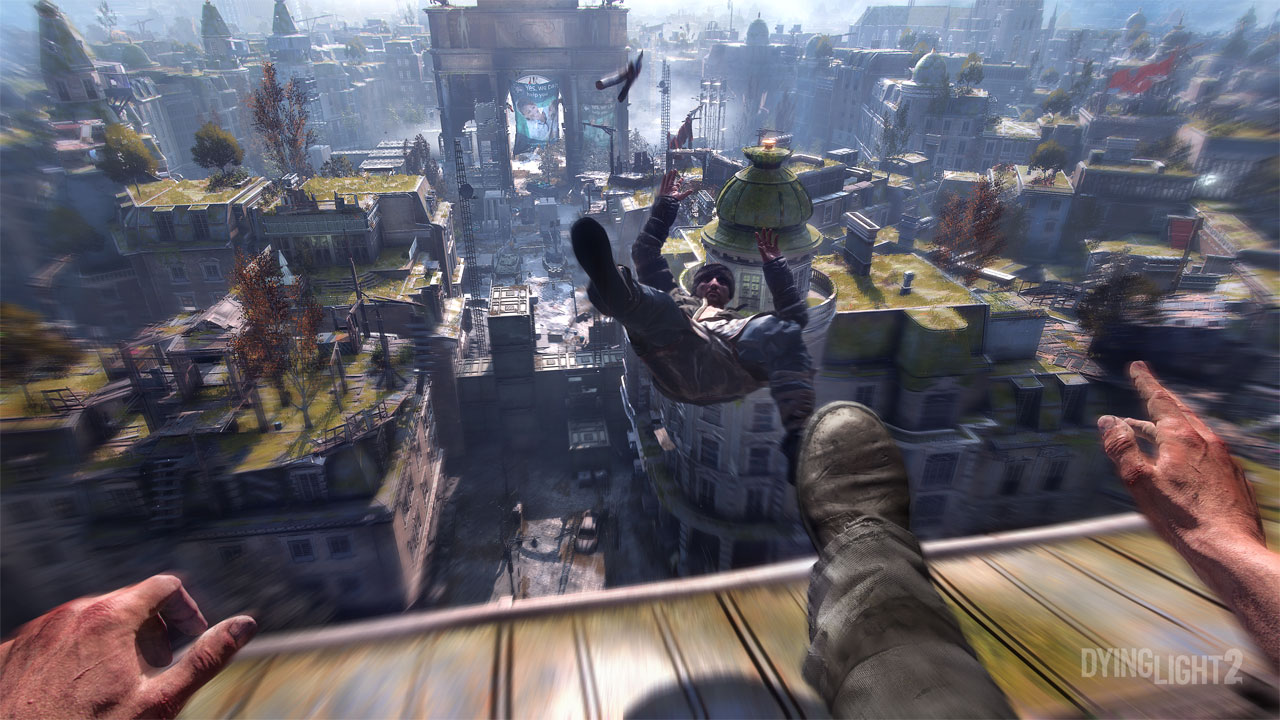
Dying Light 2’s producer Kornel Jaskula walks us through Techland's pitch for the future of open-world sandbox design
Adrian Ciszewski is the Creative Director for both Dying Light and Dying Light 2 and sheds light on Techland’s working process in making the jump to a more narratively ambitious sequel, revealing that “If Dying Light was a more serious version of Dead Island, Dying Light 2 is a much more serious version of Dying Light.”
“It’s not like our agenda is flipping to create something really different, it’s the same pillars, the same game, but for the sequel, we wanted to increase our audience. There are people that still didn’t play Dying Light 1, but why? We figured out that we should do something with Dying Light 2 to make sure that even people who don’t like zombies can still enjoy this game. It’s still the same in terms of the second-to-second gameplay, but it’s more tactical this time, and will hopefully trigger more satisfaction in the player, whether you’re a long term fan or completely new to the series.”
Anyone who’s seen any of Dying Light 2’s trailers or gameplay demos will notice the conspicuous absence of any zombies, which strikes as somewhat odd for… well, a zombie game in which the living dead roam the earth. According to Ciszewski, that’s been intentional, as Techland has been inspired by the likes of Game of Thrones, The Walking Dead, and medieval European history itself to create a world in which the living are just as dangerous (if not more so) than the dead.
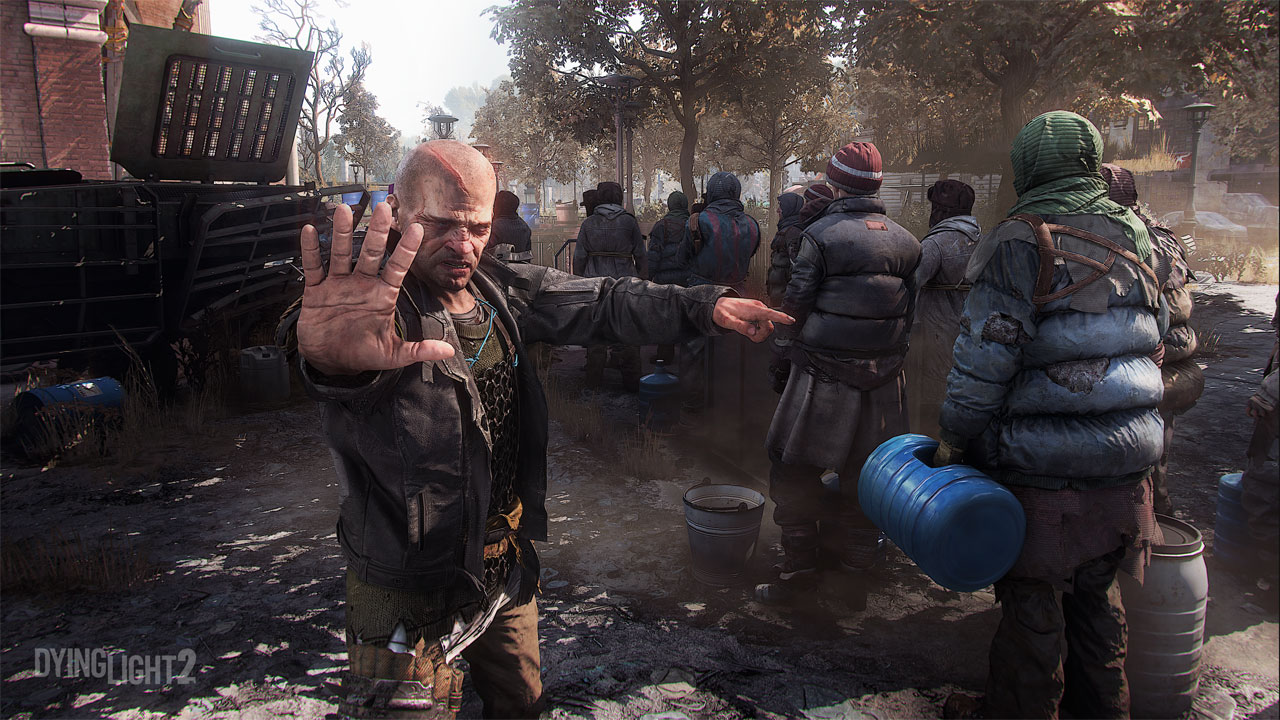
“We had an idea that this time it could be more about humans, and that it would take place fifteen years after the fall, so there is more space for art and injecting our creative ideas about what the apocalypse would look like. It mimics the Middle Ages from the past in that the people are not really trusting to each other, there is a spreading of mistrust and no one believes in God, culture, or science, so we can have all these colourful communities that are really opportunistic. That gives us a space to create a hyperbole of the present day with Dying Light 2’s apocalypse.”
"Dying Light 2 is not a game that will teach you right from wrong, but it is one that will feel familiar to most because of the public struggle between right and wrong."
Adrian Ciszewski, Creative Director
This setting allows Dying Light 2 to act not just as a narrative sandbox, but a political one too, as players get the opportunity to determine the rulers of the post-apocalypse, and discover how their varying leadership styles and ideologies affect the world around you. If the Peacekeepers are essentially a walking metaphor for authoritarianism, then the Scavengers – a group of Hobbesian, self-serving anarchists – are their polar anthesis, but these won’t be the only groups fighting for dominion over the open world, which is four times the size of all of Dying Light’s zones put together. Techland hasn’t exactly been shy from openly recognising the political undertones of its setting either, which is refreshing in an age when so many other publishers are too scared to even mention the “P” word in public, but Ciszewski clarifies that its subject matter never rose from a desire to poke any proverbial bear.
“We never suddenly made a decision to create a political game, but there are certain rules or social dynamics that guide Dying Light 2’s world. If you want a game that resonates with your own personal life, there should be some similarities with the real world, and that means drawing from the problems it contains. Dying Light 2 is not a game that will teach you right from wrong, but it is one that will feel familiar to most because of the public struggle between right and wrong. It’s a world you can believe in, so that’s the idea behind that.”
One giant leap
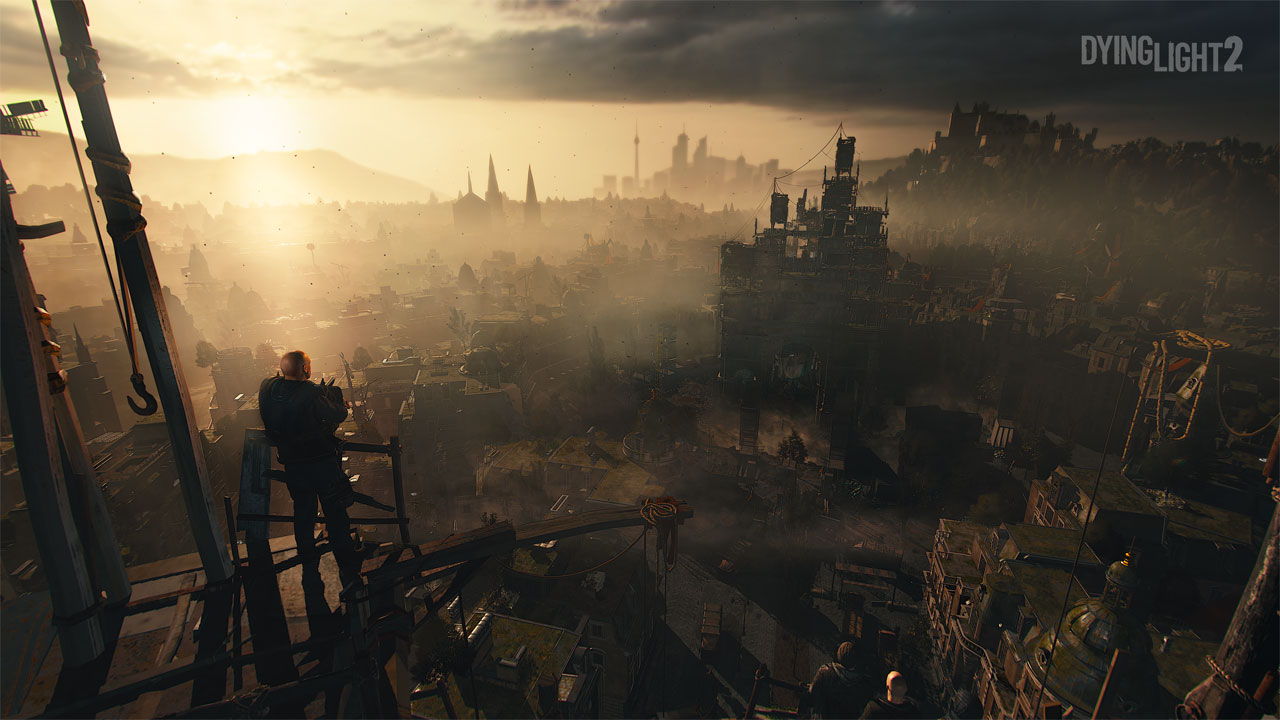
But back to gameplay. After all, it’s what makes Techland tick. Bartosz Kulon and Dawid Lubryka, the Lead Game Programmer and Animation Director respectively, have both worked at the studio since the days of Dead Island, responsible for the core parkour mechanics and combat systems that make up the nuts and bolts of the Dying Light series. “Everything you interact with in Dying Light has my hands on it!” jokes Kulon, and the primal exhilaration evoked by Dying Light’s exceptional parkour mechanics are indeed something that both he and Lubryka have been perfecting for years, right through to the current iteration of the system in Dying Light 2.
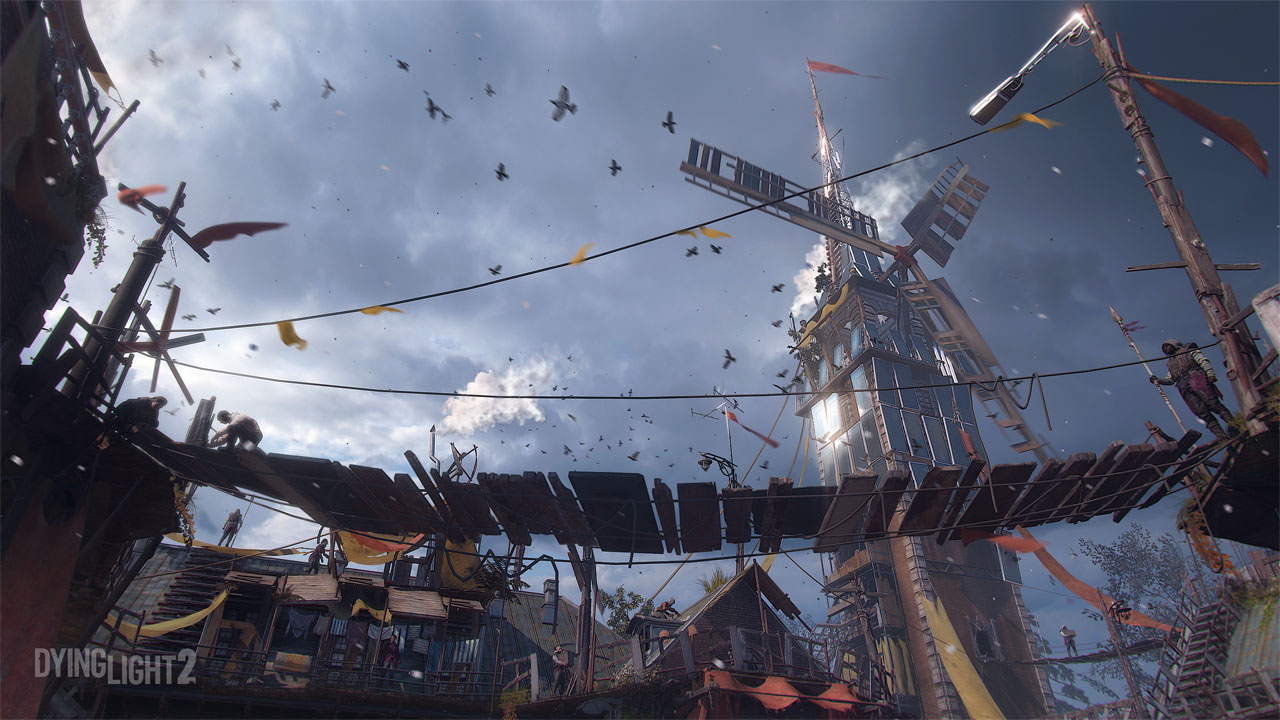
Techland confirms the grappling hook is back for Dying Light 2, promises it won’t break the game this time
“We had a group of professional free-runners do some tricks for us as a reference [during the development of Dying Light], and we’re always watching tons of videos online and sharing stuff with one another to get some inspiration and to see how real people are actually doing this stuff,” Lubryka tells me. “Of course, not all of this translates directly to the games for many reasons, because we create something that has to be believable. So we always try to look at the videos and think 'OK, how does this translate to our world?' and usually it’s more tricky than we first think! Especially when we see something amazing YouTube, but then we’re like, 'How are we supposed to do this?'"
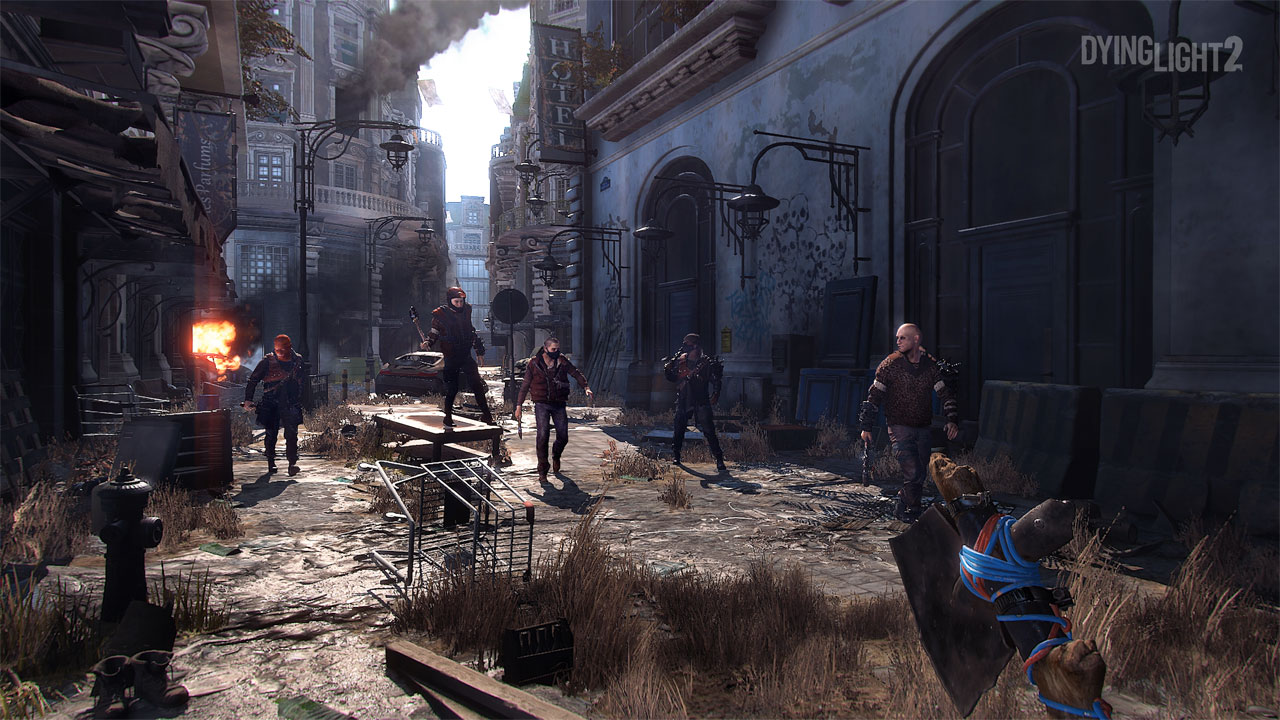
“We have a long list of new parkour moves that we would like to put in Dying Light 2. We’ve put a lot of it in already, and some we need to figure out why they ought to be in there. One of the goals for this game is to be a little more mature than the previous ones, and that means that a lot of the gameplay needs to have proper reasoning to support it. It’s still a zombie apocalypse, but it’s a heavy game with big problems and choices and consequences, so we try to always look at the things from the perspective of 'How does this support the game, the lore, and the world?'. If it has no real place, we try not to put it in just for the sake of it. Well, sometimes we do... but only sometimes!”
"Dying Light 2 is something of a quantum leap over our previous games.”
Tymon Smektała, Lead Game Designer
But if Dying Light 2 is more grounded in reality than Dying Light or Dead Island, how does that bode for the outlandish elemental weaponry that has been a staple of Techland’s zombie games since 2010? The arsenal of knives, baseball bats, hammers, and firearms in those games were buffeted by a robust crafting system that allows players to level up their loot with new modifications and stat bonuses, but Kulon assures us that Dying Light 2 will continue in that tradition, only evolving it to better reflect the more authentically realised setting.
“We are not trying to get rid of them, because it was a cool feature of Dying Light. But we’re actually trying to see what people are actually doing in the real world with this kind of weaponry. There are weapons that exist that can actually freeze a watermelon when you hit it! So we want to frame it in context as much as possible, and even show the player how an elemental weapon could possibly work," Kulon tells me, noting that this does mean that some ideas have to hit the cutting room floor as a result. "That requires explaining everything to the player as much as possible or, sometimes, when we figure out a weapon that is actually too ridiculous, we just remove it… or turn it into an Easter egg!”
Play time
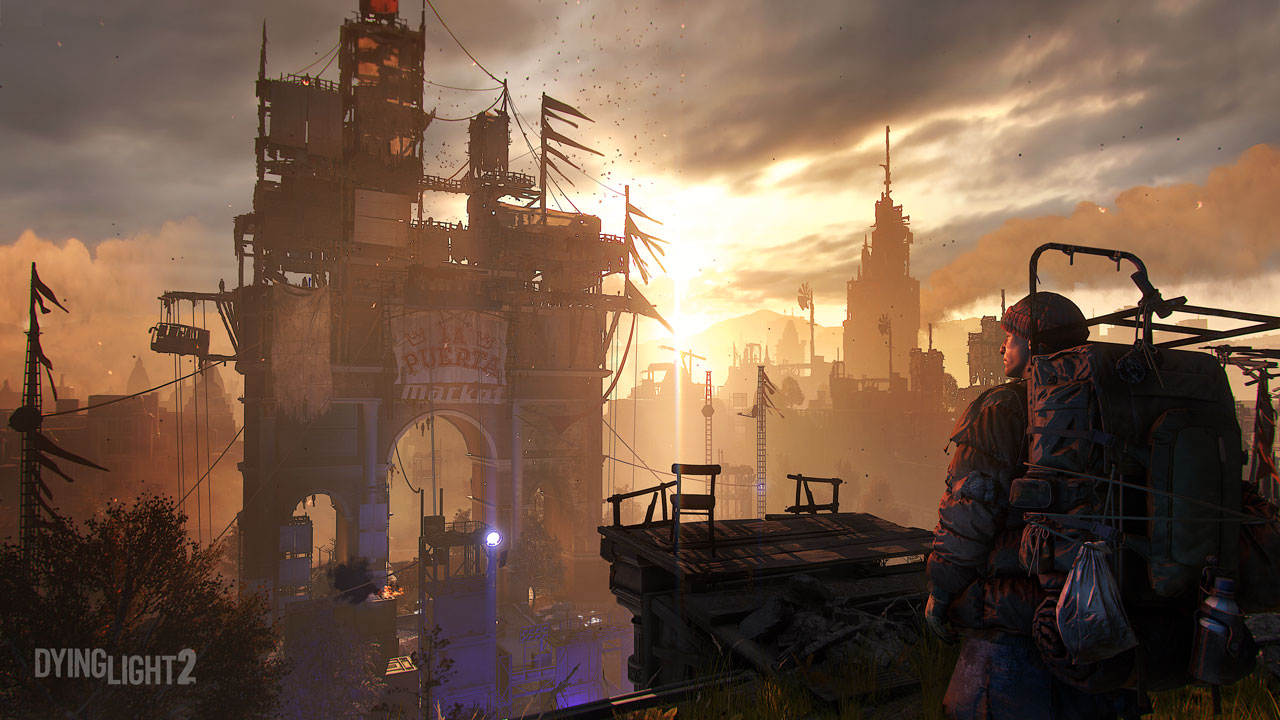
Dying Light 2 was originally tagged with a release year of 2019, but Techland has since poured cold water on that timetable, stating that any concrete launch information for the game is yet to be announced. But given the scope and scale of its ambition, this isn’t a game you’d want to see rushed out the door anyway, especially as sales and active user numbers on the original game suggests that fans are still more than happy to zip and dash around the Turkish inspired streets of Harran in the meantime.
Taken on its own, Dying Light 2 looks like everything a good sequel should be. Couched in the context of Techland’s rich and successful history with the genre of open-world zombie games, however, it looks like the kind of purpose-driven title that everything leading up till now has prepared the studio for. “Dying Light 2 is something of a quantum leap over our previous games” admits Smektala, when looking back at how far Techland has come since the days of Dead Island. I, however, am inclined to disagree. Techland has always made bold, incisive zombie games. The only difference this time is that Dying Light 2 has history on its side.
Stay tuned to GamesRadar+ for more news and coverage of Dying Light 2 later this week, or check out our guide to the best new games of 2019 and beyond.
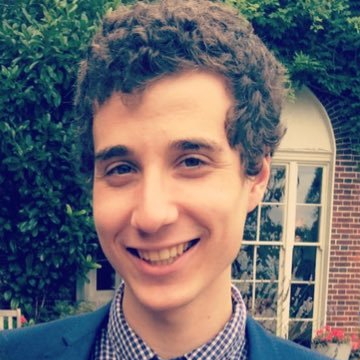
Alex is a former Features Writer at GamesRadar, which once made him responsible for gracing the internet with as many of my words as possible, including reviews, previews, interviews, and more. Lucky internet!
